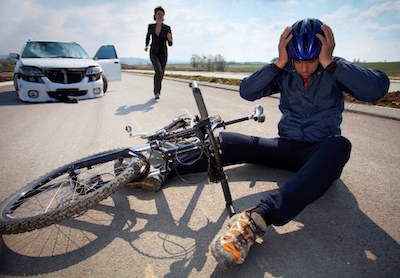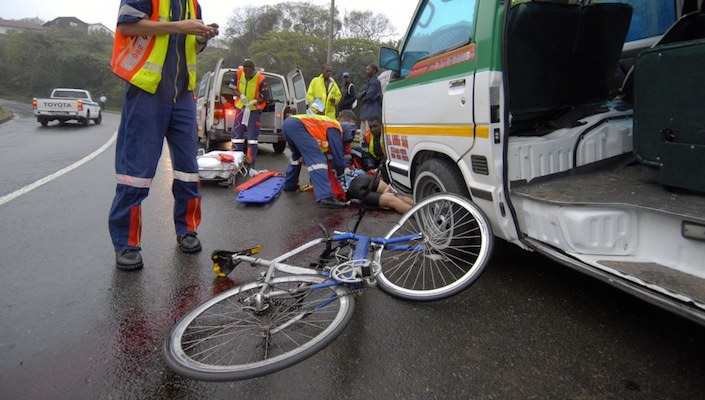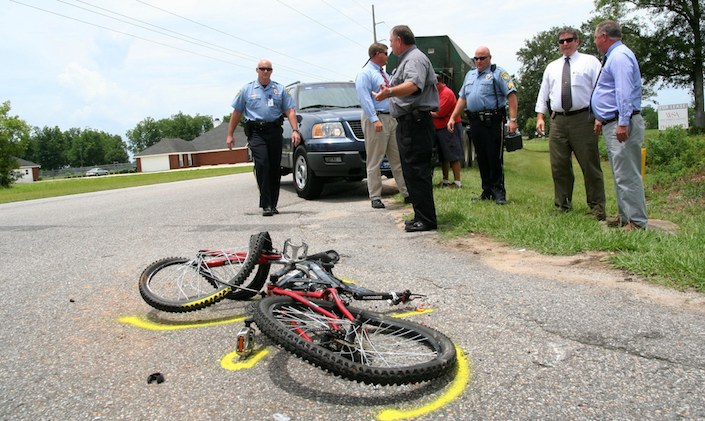We all ride a bike for the good times, whether it be beating the traffic home, railing some singletrack or ticking over the miles. But during our two wheeled adventures there is the possibility that something could go wrong. It's a terrible thought, but we could be involved in an accident or even be witness to somebody else's unfortunate luck. It's not all bad, because an opportunity may present itself for you to be able to help someone else. Or even better still, help yourself...
Accidents or incidents can be quite a shaking experience, mostly because they're completely unexpected.
Immediately after an accident your judgement and thoughts might be a little bit out of whack, so it's a good idea to review and learn a step-by-step process to fall back on. This will allow you to follow through with a procedure you've learnt, ensuring the best result given the circumstances.
Let's start with road cycling, before moving onto mountain bike riding next week.
Road cyclists are exposed to a number of elements regarding safety, and things do go wrong, from a minor fall to a bunch pile up. The worst scenario is if it involves a vehicle, as the consquences can be extreme and tragic. The good news is that the overall approach to the 'aftermath' is quite similar. Gather as much information as you can, make a record of the incident and ensure everybody is okay to get home safely.
HEADS UP! Check out the article "Arrive alive in 5 steps" for some safe cycling tips to help avoid these sticky situations in the first place.
GATHERING INFORMATION
If an incident involves a car and the car has stopped, it's best to remain civil if possible, even with the adrenalin pumping. Just remember, staying calm and present will allow you to gather the required information more easily. Also keep in mind that in most cases the driver will be a bit shaken as well. Take charge of the situation if you are able.

- Try to make a mental note of the driver's appearance.
- If possible, write an SMS containing key information (time, location, registration number, driver name) and send it to a friend or family member.
- Use your judgement on this, but if you feel it is necessary, call Police and request that an incident is recorded over the phone. This evidence serves well if needed in the future as there is now an official record of the accident.
- Check to make sure that you are okay, and that your bike works. Be realistic about your injuries to avoid follow-on trauma complications.
You might think that your physical wellbeing should be at the top of the list, but the reality is the driver might leave the scene. While the driver is present, you need to make the most of it if you're capable.
REMEMBER: SMS details to friend/family. Make police record. Self examination.
SAFETY TIP: SMS a friend or your partner when you go riding. "Going riding, usual route 2hrs max. Ciao" - then SMS when you get home, so they know you're all good!
HELPING A BROTHER OUT
If you happen to come across another injured cyclist, you can step in to offer assistance in many ways. No doubt common sense will take over, but try to remember the basics even if you've got no First Aid qualifications to your name. Medical care is an absolute priority, so think quick.
- Check for vitals or coherance (try to start a conversation and see how they respond through their speech and understanding).
- Check for any major injuries sustained from the incident.
- Take suitable action given the circumstances - try to limit their movement until you can establish their condition.
- Call for medical assistance as quickly as possible.
This is all assuming the rider is conscious and able to converse with you. If the situation is so critical that the rider is unconscious, then do everything you can to keep them safe.
- Limit unneccessary movement of the rider to reduce chances of spinal injury.
- Immediately call for medical assistance.
- Protect rider from traffic or other dangers without endangering yourself.
The majority of this comes down to common sense, so decide what is best at the time. It's obviously a brilliant idea to carry a mobile phone with you, just in case you ever need it. It's the day you leave it at home that you'll likely need it the most... As a common courtesy regarding accidents, it's always nice for someone to be the nice guy and ensure anybody involved is safe and on their feet. So take 5 minutes and make a quick assessment to make sure everybody is safe, it's the least you can do for a friend in need!




